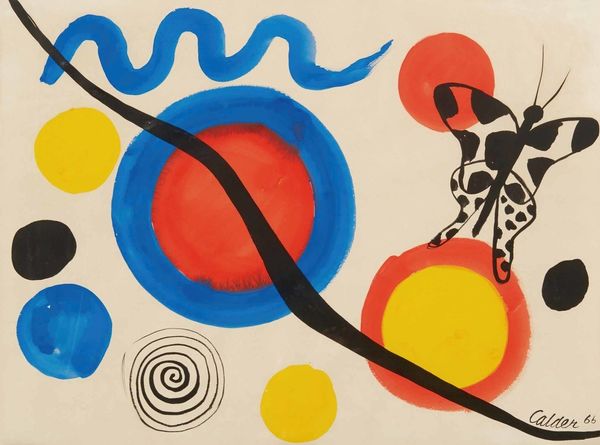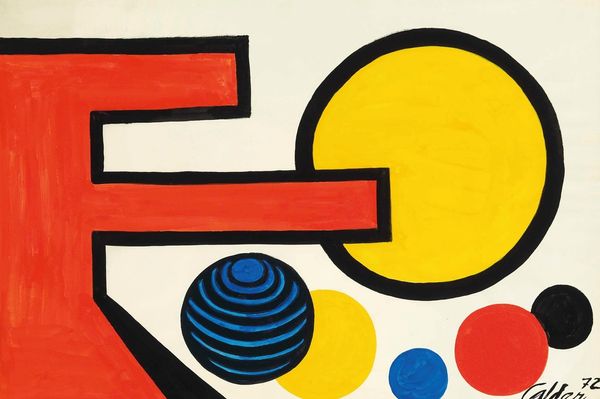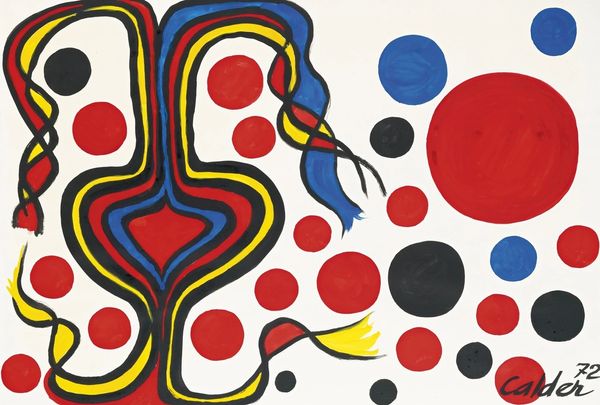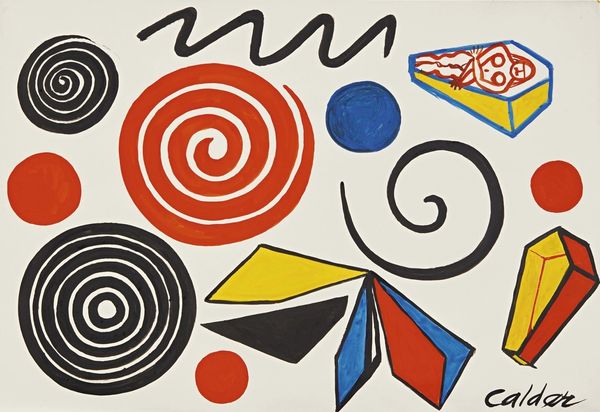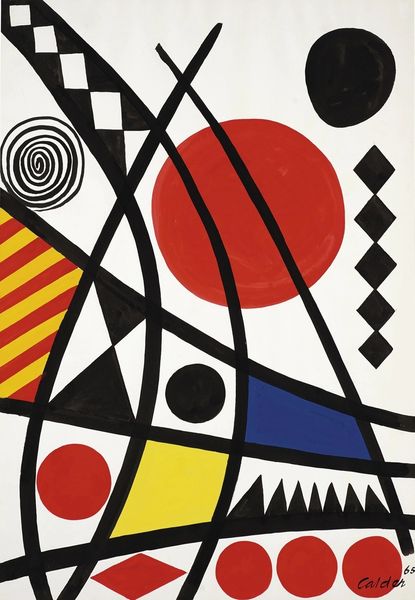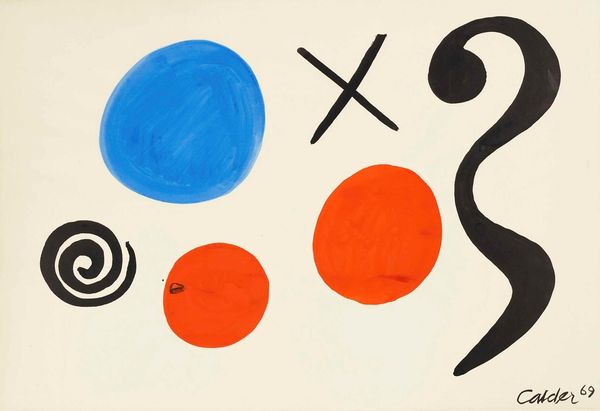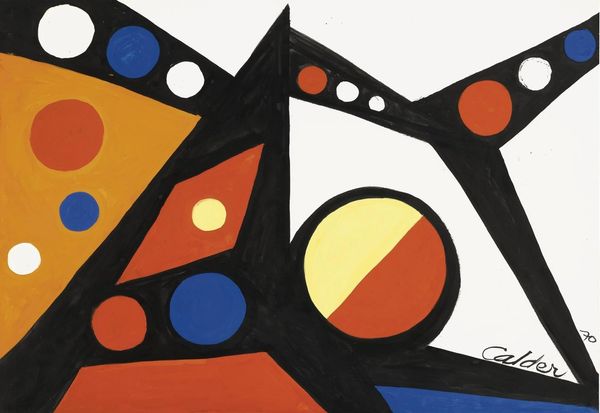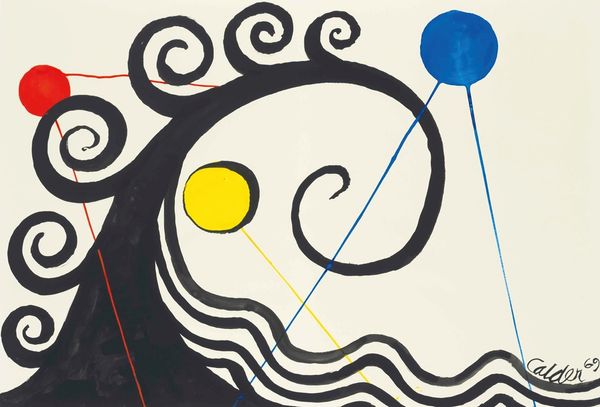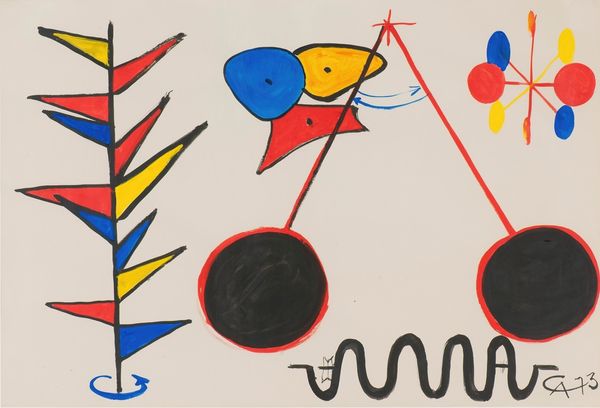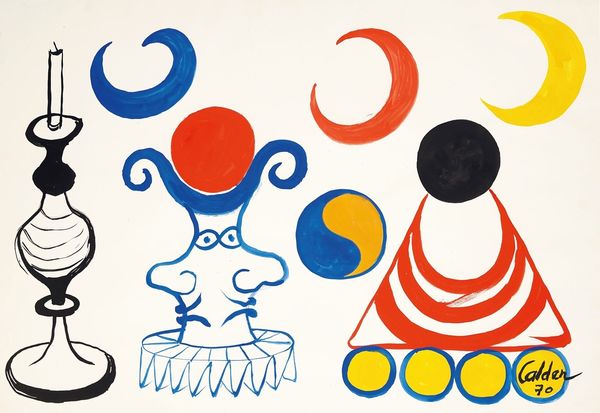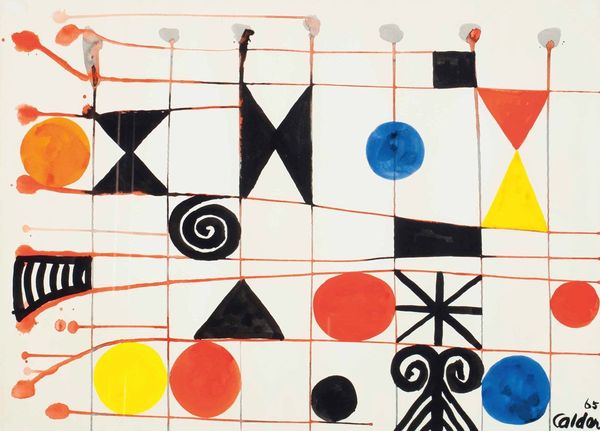
painting, acrylic-paint
#
kinetic-art
#
painting
#
colour-field-painting
#
acrylic-paint
#
abstract
#
word art
#
bright colours popping
#
geometric
#
modernism
Copyright: Modern Artists: Artvee
Editor: This is Alexander Calder's "Yellow Beach Ball & Target" from 1967, painted with acrylics. It has such a playful energy! All these basic shapes floating on a cream ground...it reminds me of children’s book illustrations. What do you see in it? Curator: It’s tempting to read this simply as whimsical abstraction. But consider Calder's construction of this image. Acrylic, relatively new at the time, allowed for these intensely saturated, flat planes of color. He embraced a synthetic medium born of industrial chemistry to achieve this playful aesthetic. It begs the question, what is "play" in a society increasingly shaped by manufactured experience? Editor: So you are thinking about how new materials shift our relationship to art and production? Curator: Precisely. Calder’s earlier mobiles embraced chance and movement, but here, the “kinetic” element is rendered static. It’s an image *of* motion rather than motion itself. How does the rise of mass-produced imagery and readily available, vibrant color like this change the way art is valued or created? Editor: It almost cheapens it… but the craftsmanship is still evident in the details, in the texture of the paint. Curator: Indeed. Look closely; that thin application is purposeful, isn’t it? Consider, also, how the canvas operates almost like a printed circuit board, arranging these pre-packaged color blocks across its surface. This connects the process to the rise of advertising and printed material during that period. Editor: It’s fascinating to consider the materials and context to challenge our immediate perceptions! I see more layers now. Curator: Exactly. We often overlook the profound impact materials and processes have on the art we experience. Thinking about them lets us move beyond just what a work looks like, into what it *means* within a given moment in time.
Comments
No comments
Be the first to comment and join the conversation on the ultimate creative platform.
